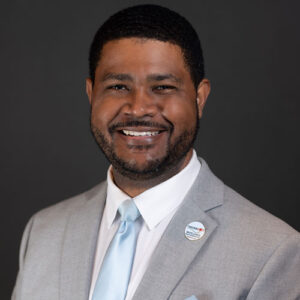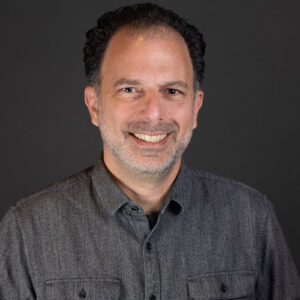New Charter Schools Need Vetting. But the Process Shouldn’t Shut Good Ones Out
Rausch & Greenberg: Year-long analysis of how charters are authorized yielded some key suggestions for how applications should evolve.

Get stories like this delivered straight to your inbox. Sign up for The 74 Newsletter
Approving or denying applications for new charter schools is among the most important duties authorizers perform. Those decisions shape the quality, quantity and types of schools that students and communities can access.
Authorizers have gotten a lot right in vetting new schooling opportunities. The most recent national study of charter school performance — including data for most students in charter schools from 2004 to 2019 — demonstrated impressive improvement overall and strong outcomes for students of color and lower-income children. Yet, in many places the application process is too bureaucratic and onerous, and privileges particular kinds of models and operators. That has prevented some excellent potential school founders from bringing better and more creative opportunities that families are seeking. Something needs to change, but what?
Over the last year, the National Association of Charter School Authorizers and our partners engaged nearly 150 school leaders, authorizers, organizations, prospective school founders and advocates — through interviews, focus groups, data analysis, literature reviews and field visits — to develop recommendations on how the new school application process should evolve, both by building on strengths of authorizing practice cultivated over two decades and transforming weaknesses. Here is some of what we learned and what the field is doing.
Some things should not change, and should be used by all authorizers to ensure that only high-quality proposals are approved. From encouraging high-quality schools to replicate and expand, to rigorously evaluating the past performance of existing operators, to using a diverse group of experts to evaluate new proposals, authorizers should work with communities to cultivate quality schools that meet family aspirations and needs.
But in other ways, the process must evolve. Unnecessarily long and burdensome applications disadvantage those who lack the financial resources or time to provide voluminous amounts of material. Too many applications also require information that isn’t necessarily available so far in advance of the opening of the school. The emergence of sophisticated artificial intelligence will likely produce stronger written applications, but will also likely tell authorizers less about the people seeking to operate the school. Determining the capacity of proposed founders to successfully run a school should go beyond current approaches — evaluating resumes for expertise in education, finance, law, etc., and conducting an interview — to include a more rigorous assessment of their proven ability to solve problems, achieve significant outcomes, make hard decisions, address and persist through challenges and successfully adapt to changing circumstances, taking into account what’s known about successful institutional leadership within and beyond education.
While the need for additional high-quality schools is not debatable, the process for proving there is sufficient demand from students and families must evolve. Overly rigid approaches — such as requiring applicants to produce intent-to-enroll forms as the only way of demonstrating demand — or allowing singular voices to speak for entire communities can lead authorizers to say no to excellent opportunities for students. Rather, authorizers and applicants should use a broad body of evidence, like data produced by the Sector Planning Supplement in D.C. and the School Insights Tool in Indianapolis, and authorizers should employ well-developed decision-making protocols and thoughtful professional judgment in evaluating the likelihood that an applicant’s plan will appeal to enough students and families.
There also needs to be room for trying new and promising approaches to educational challenges, things like how artificial intelligence can support re-thinking teaching and learning structures, more effective methods of structuring teaching and supports for students with learning disabilities or piloting new ways of using time, talent and human resources. While state policy changes are needed in some instances, an authorizer could designate a portion of a portfolio for schools of innovation or problem solving. To ensure transparency for families and the public, such schools should have a special, public designation, should be considered a pilot with clear outcome expectations and should use an informed consent process similar to university-based research.
Many of these changes won’t matter unless the field continues to grow in its sophistication of how school quality is defined and measured. Ensuring that applicants describe a well thought-out logic model, aligned with their schooling approach and clear and measurable ways of defining student success, can serve as a foundation for creating a more robust approach to accountability.
These recommendations and others are being implemented and tested by NACSA’s Leadership in Action cohort, a group of more than 20 authorizers across 13 states who oversee nearly 40% of all charter schools. We are already learning that implementation is complicated and nuanced, and NACSA is working with authorizers and others to develop field-tested guidance to implement our recommendations. Here are some findings from an examination of more than 700 new school applications received from 2018 to 2023 from authorizers participating in the cohort:
- Certain models had a much higher likelihood of being approved than others, including early college, bilingual/dual language/language immersion, no adult excuses, civic engagement/social justice and Montessori/Waldorf/Reggio Emilia.
- About half of rejected applications were not approved for two reasons: deficiencies in the educational program (27%) and incomplete applications (23%).
- Approximately one-fourth of applications had strong evidence of community ties and were much more likely to be approved (60%) than those without or with unknown community ties (31%).
The process of helping to develop the genius of students by gaining authorization to open a new school should be hard — but it needs to be the right kind of hard. Enabling creative problem solvers to build more excellent, diverse and innovative schools that respond to the high aspirations of families and communities is the new opportunity that authorizers and NACSA are working to figure out.
Get stories like these delivered straight to your inbox. Sign up for The 74 Newsletter

;)

